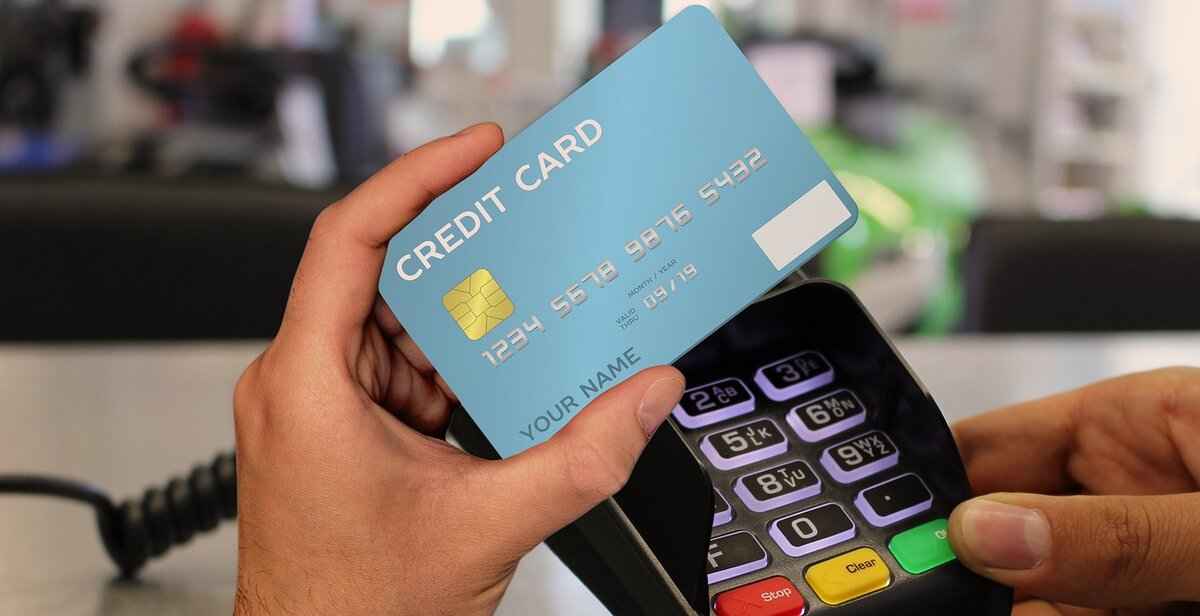This article delves into the serious ramifications of failing to fulfill the obligations of a promissory note. The consequences extend beyond mere financial loss, affecting legal standings, credit scores, and personal relationships. Understanding these implications is crucial for both borrowers and lenders.
Understanding Promissory Notes
A promissory note is a legally binding document wherein a borrower commits to repay a lender a specified sum of money under predetermined conditions. It is essential for all parties to comprehend the terms outlined in the note, as these terms dictate the responsibilities and rights of both the borrower and lender.
Legal Consequences of Non-Payment
When a borrower defaults on a promissory note, the lender has the right to initiate legal proceedings to recover the owed amount. This process may involve:
- Filing a Lawsuit: The lender may file a lawsuit in a court of law to seek judgment against the borrower.
- Obtaining a Judgment: If the court rules in favor of the lender, they may obtain a judgment that allows them to pursue further collection actions.
- Wage Garnishment: In some cases, lenders can garnish the borrower’s wages to recover the owed amount.
Default and Its Implications
Defaulting occurs when the borrower fails to make payments as stipulated in the promissory note. This breach can lead to severe repercussions:
- Legal Action: As mentioned, lenders can take legal action to recover the debt.
- Increased Debt: Late fees and interest can accumulate, increasing the total debt owed.
- Relationship Strain: Non-payment can damage personal and professional relationships between borrowers and lenders.
Types of Default
There are two primary types of default:
- Monetary Default: Failure to make scheduled payments.
- Non-Monetary Default: Breach of other terms outlined in the promissory note.
Notice of Default
Upon default, lenders typically issue a notice of default, formally notifying the borrower of missed payments. This notice serves as a crucial warning and provides the borrower with an opportunity to rectify the situation before further legal action is pursued.
Impact on Credit Scores
Failure to pay a promissory note can have a detrimental effect on a borrower’s credit score. Credit bureaus are notified of missed payments, which can significantly lower credit ratings. This reduction in creditworthiness can lead to:
- Higher Interest Rates: Future loans may come with increased interest rates due to perceived risk.
- Loan Denials: Borrowers may find it challenging to secure new loans or credit lines.
Long-Term Effects on Credit
The repercussions of non-payment can linger for years, affecting financial opportunities. Borrowers must be proactive in addressing their credit issues to recover from the damage caused by default.
Negotiating with Lenders
For borrowers facing difficulties, negotiation with lenders can be a viable option. Effective strategies include:
- Loan Modifications: Requesting adjustments to payment terms can provide immediate relief.
- Settlements: Offering a lump-sum payment that is less than the total owed can sometimes be accepted by lenders.
Preventing Default on Promissory Notes
To avoid the pitfalls of default, borrowers should consider the following:
- Budgeting: Maintain a clear budget to ensure funds are available for payments.
- Open Communication: If financial difficulties arise, communicate with lenders early to explore options.

Understanding Promissory Notes
A promissory note is a vital financial instrument that serves as a written promise from a borrower to pay back a specified amount of money to a lender under agreed-upon terms. Understanding the intricacies of this document is essential for both borrowers and lenders, as it establishes the legal framework governing the loan.
Typically, a promissory note includes critical elements such as:
- Principal Amount: The total sum of money borrowed.
- Interest Rate: The percentage of the principal charged as interest.
- Maturity Date: The date by which the borrower must repay the loan.
- Payment Schedule: Details on how and when payments will be made.
- Default Provisions: Conditions under which the lender can claim the remaining balance if payments are missed.
Understanding these components is crucial as they dictate the responsibilities of both parties involved. For borrowers, being aware of the terms can help in managing their finances effectively, while lenders can ensure they have legal recourse in case of default.
When a borrower signs a promissory note, they are not merely engaging in a financial transaction; they are entering into a legally binding agreement. This means that both parties are protected under the law, but it also implies that failing to adhere to the terms can lead to significant consequences.
In the event of non-payment, lenders have the right to pursue various legal remedies. This can include filing a lawsuit, which may result in wage garnishment or liens on property. Borrowers must understand that defaulting on a promissory note can severely impact their credit score, making future borrowing more difficult and expensive.
Moreover, it is important for borrowers to recognize that communication with lenders can often lead to alternative arrangements. Many lenders are willing to negotiate repayment plans or even modify the terms of the loan if they are approached proactively. This can prevent the situation from escalating into default.
In summary, a promissory note is not just a simple document; it is a comprehensive agreement that outlines the obligations and rights of both the borrower and the lender. Understanding its structure and implications is crucial for maintaining financial health and avoiding legal troubles.

Legal Consequences of Non-Payment
When a borrower fails to honor a promissory note, the lender is faced with several legal options to recover the outstanding debt. This section delves into the intricate legal processes that can unfold when a promissory note is not paid, outlining the potential outcomes for both the lender and the borrower.
A promissory note is a legally binding document that stipulates the terms of a loan, including the repayment schedule and interest rates. When a borrower defaults, which is defined as failing to make the required payments, the lender may initiate a series of legal actions to reclaim the owed amount. Understanding these processes is crucial for both parties involved.
Default occurs when the borrower does not fulfill their payment obligations as specified in the promissory note. This can happen for various reasons, including financial hardship, miscommunication, or even neglect. The implications of default are serious and can lead to legal disputes, damaged credit scores, and strained relationships.
Once a borrower defaults, lenders typically have several legal avenues they can pursue:
- Demand Letter: The first step often involves sending a formal demand letter, requesting payment and outlining the consequences of continued non-payment.
- Filing a Lawsuit: If the borrower fails to respond or comply, the lender may file a lawsuit in civil court to seek a judgment against the borrower for the owed amount.
- Judgment Collection: Upon winning a judgment, lenders can employ various collection methods, including wage garnishment or bank levies, to recover the debt.
- Foreclosure or Repossession: If the promissory note is secured by collateral, such as property or vehicles, the lender may initiate foreclosure or repossession proceedings.
The consequences of legal action can be severe for borrowers. A judgment against them can lead to:
- Credit Damage: Legal action and resulting judgments can significantly impact a borrower’s credit score, making it difficult to secure future loans.
- Increased Financial Burden: Legal fees and costs associated with defending against a lawsuit can add to the borrower’s financial strain.
- Loss of Assets: If collateral is involved, borrowers risk losing their property or other assets to satisfy the debt.
Before matters escalate to court, borrowers may have opportunities to negotiate with lenders. Options include:
- Payment Plans: Borrowers can propose structured repayment plans to catch up on missed payments.
- Settlements: In some cases, lenders may agree to settle for a lesser amount, allowing borrowers to pay off their debt more manageably.
In conclusion, understanding the legal consequences of failing to pay a promissory note is essential for both lenders and borrowers. It is advisable for borrowers to communicate openly with their lenders at the first sign of trouble to explore alternatives before legal action becomes necessary.
Default and Its Implications
Defaulting on a promissory note can have serious consequences for both the borrower and the lender. When a borrower fails to make payments as agreed, it is classified as a default. This section delves into the implications of default, including the legal ramifications, potential financial repercussions, and the impact on personal relationships.
A promissory note is a legally binding document that stipulates the terms of a loan, including the repayment schedule and interest rates. When a borrower defaults, the lender is entitled to take specific actions to recover the owed amount. The legal definition of default varies depending on the terms outlined in the promissory note, but it generally refers to the failure to pay any part of the principal or interest when due.
One of the immediate consequences of default is that the lender may initiate legal action. This can include filing a lawsuit to recover the outstanding balance. If the court rules in favor of the lender, the borrower may face wage garnishments, liens on property, or other collection methods. Furthermore, the borrower may be responsible for the lender’s legal fees, adding to the financial burden.
Another significant consequence of default is the impact on the borrower’s credit score. A missed payment can be reported to credit bureaus, leading to a drop in creditworthiness. This can affect the borrower’s ability to secure future loans, obtain favorable interest rates, or even rent housing. The repercussions on credit scores can linger for years, making it essential for borrowers to understand the importance of timely payments.
In addition to financial implications, defaulting can strain personal relationships, especially if the loan was made between friends or family members. The emotional fallout from failing to repay a loan can lead to mistrust and conflict, complicating personal dynamics.
There are different types of default, including monetary defaults, which involve missed payments, and non-monetary defaults, which can occur if a borrower violates other terms of the agreement, such as failing to maintain insurance on collateral. Understanding these distinctions is crucial for borrowers to navigate their responsibilities effectively.
Upon default, lenders typically send a notice of default to inform borrowers of their missed payments. This notice serves not only as a formal communication but also as a warning that further action may be taken if the situation is not rectified. It is imperative for borrowers to respond promptly to such notices, as ignoring them can exacerbate the situation.
For borrowers facing financial difficulties, seeking negotiation options with lenders can be a viable strategy to avoid the consequences of default. Many lenders are open to discussing alternative payment arrangements or modifications to the loan terms, which can provide temporary relief and prevent further legal action.
In summary, defaulting on a promissory note can lead to a myriad of consequences, including legal actions, negative impacts on credit scores, and strained relationships. It is vital for borrowers to understand their obligations under the promissory note and to communicate proactively with lenders to mitigate the risks associated with default.
Types of Default
When dealing with promissory notes, understanding the is crucial for both borrowers and lenders. Defaults can broadly be categorized into monetary and non-monetary defaults, each carrying different implications and consequences.
Monetary Default refers to the failure to make scheduled payments on the principal or interest of the loan. This is the most common type of default and typically occurs when a borrower misses a payment deadline. Such defaults can lead to severe repercussions, including:
- Legal Action: Lenders may initiate legal proceedings to recover the owed amount.
- Increased Interest Rates: Defaulting can lead to higher interest rates on future loans.
- Negative Impact on Credit Score: Monetary defaults are reported to credit bureaus, significantly lowering the borrower’s credit score.
On the other hand, Non-Monetary Default occurs when the borrower violates other terms of the promissory note, which may not directly relate to payments. Examples include:
- Failure to Maintain Insurance: If the borrower does not keep the required insurance on the collateral, this can be considered a default.
- Non-Compliance with Reporting Requirements: Borrowers may be required to provide financial statements or other disclosures, and failure to do so can lead to default.
- Transfer of Collateral: If a borrower transfers or sells collateral without the lender’s consent, it can trigger a default.
Understanding these distinctions is essential for borrowers to navigate their responsibilities effectively. By recognizing the differences between monetary and non-monetary defaults, borrowers can take proactive steps to avoid falling into default and the associated legal challenges.
Additionally, borrowers should be aware that lenders typically send a Notice of Default when a default occurs. This notice serves as a formal communication regarding missed payments or breaches of the loan agreement. It is an essential document that outlines the borrower’s obligations and the potential consequences of continued non-compliance. Upon receiving a notice, borrowers should take immediate action, which may include negotiating with the lender or seeking financial advice.
Ultimately, being informed about the types of default can empower borrowers to manage their financial obligations more effectively and maintain a positive relationship with their lenders. By staying proactive and addressing any issues before they escalate, borrowers can protect their creditworthiness and overall financial health.
Notice of Default
is a critical communication that lenders send to borrowers when payments are missed. This document serves as an official warning that the borrower has defaulted on their loan agreement. Understanding its significance is essential for borrowers to navigate their financial obligations effectively.
When a borrower receives a , it typically indicates that they have failed to make payments as agreed. This notice is not just a formality; it marks the beginning of a potentially serious situation. The lender uses this notice to inform the borrower of their delinquency and the subsequent actions that may follow if the situation is not remedied.
- Importance of the Notice: The notice serves multiple purposes. Firstly, it formally documents the borrower’s missed payments, which is crucial for any future legal proceedings. Secondly, it provides the borrower with an opportunity to rectify the situation before more severe actions are taken, such as foreclosure.
- Time Sensitivity: The notice often comes with a specific timeframe within which the borrower must respond or make payments. Ignoring this notice can lead to accelerated legal actions, including the possibility of losing the property used as collateral.
Upon receiving a , borrowers should take immediate action:
- Review the Notice: Carefully read the notice to understand the details of the missed payments, including amounts due and deadlines.
- Contact the Lender: Engage with the lender to discuss the situation. Open communication can often lead to solutions that may not have been previously considered.
- Explore Options: Borrowers may have various options available to them, such as loan modifications, repayment plans, or even settlements. Understanding these can provide a pathway to avoid further complications.
- Seek Legal Advice: Consulting with a legal professional can help borrowers understand their rights and obligations, ensuring they are well-informed before making any decisions.
It is also important to note that receiving a can have implications beyond immediate financial concerns. It may negatively impact the borrower’s credit score, affecting their ability to secure future loans or credit. Therefore, taking proactive steps in response to the notice is crucial.
In summary, a is a significant alert for borrowers regarding their financial obligations. By understanding its implications and responding appropriately, borrowers can work towards resolving their issues and avoiding further legal consequences.
Legal Remedies for Lenders
When a borrower defaults on a promissory note, lenders have a variety of legal remedies at their disposal to recover the owed amounts. Understanding these remedies is crucial for both lenders and borrowers, as the implications can be significant.
1. Filing a Lawsuit
One of the most common legal remedies is to file a lawsuit against the borrower. This process involves:
- Initiating Legal Action: The lender can file a complaint in a court of law, seeking a judgment for the amount owed.
- Obtaining a Judgment: If the court rules in favor of the lender, they will receive a judgment that legally obligates the borrower to pay the debt.
- Enforcing the Judgment: The lender may then pursue collection methods such as wage garnishment or bank levies to recover the funds.
2. Secured vs. Unsecured Debt
The nature of the debt—whether it is secured or unsecured—plays a significant role in the lender’s options:
- Secured Debt: If the promissory note is secured by collateral, the lender has the right to repossess the collateral upon default.
- Unsecured Debt: For unsecured debts, lenders must rely on legal action to recover funds, as there is no collateral to claim.
3. Alternative Dispute Resolution
Before resorting to litigation, lenders may consider alternative dispute resolution (ADR) methods:
- Mediation: A neutral third party can help facilitate a discussion between the lender and borrower to reach a mutually agreeable solution.
- Arbitration: In arbitration, an arbitrator makes a binding decision on the dispute, which can be a quicker and less expensive option than court.
4. Impact of Bankruptcy
If a borrower declares bankruptcy, the lender’s ability to recover debts may be significantly affected:
- Automatic Stay: Upon filing for bankruptcy, an automatic stay goes into effect, halting all collection efforts.
- Priority of Claims: In bankruptcy proceedings, secured creditors typically have priority over unsecured creditors, affecting the likelihood of recovery.
5. Negotiated Settlements
Lenders may also opt for negotiated settlements as a remedy:
- Debt Settlement: This involves negotiating a reduced amount that the borrower can pay, allowing the lender to recover some funds without further legal action.
- Payment Plans: Establishing a structured repayment plan can provide a more manageable way for borrowers to repay their debts while ensuring lenders receive compensation.
6. Repercussions for Borrowers
It’s essential for borrowers to understand that pursuing legal remedies can have serious repercussions:
- Credit Impact: Legal actions and defaults can lead to significant drops in credit scores, affecting future borrowing capabilities.
- Legal Fees: Borrowers may incur additional costs from legal fees and court expenses, further complicating their financial situation.
In conclusion, lenders have multiple avenues to recover debts from borrowers who default on promissory notes. Each option carries its own implications for both parties involved. Borrowers facing difficulties should consider proactive communication with lenders to explore potential solutions before legal remedies become necessary.

Impact on Credit Scores
Failure to pay a promissory note can have serious repercussions on a borrower’s credit score. Credit scores are critical in determining a borrower’s creditworthiness and can significantly affect their ability to secure loans in the future. This section explores how missed payments can influence credit scores and the broader implications for future borrowing opportunities.
When a borrower misses a payment on a promissory note, the lender typically reports this delinquency to credit bureaus. This report can lead to a decrease in the borrower’s credit score, which is calculated based on various factors, including payment history, credit utilization, and length of credit history. A missed payment can remain on a credit report for up to seven years, making it challenging for borrowers to regain their previous credit standing.
Understanding the Credit Scoring System
- Payment History: This is the most significant factor, accounting for approximately 35% of a credit score. A single missed payment can lead to a substantial drop in score.
- Credit Utilization: This reflects the amount of credit used versus the total available credit. High utilization rates can compound the negative effects of missed payments.
- Length of Credit History: A longer credit history can help mitigate the impact of missed payments, but it does not negate them entirely.
Reporting to Credit Bureaus
Once a payment is missed, lenders often wait a specific period—usually around 30 days—before reporting the delinquency to credit bureaus. This timing is crucial for borrowers to understand, as it provides a window for potential remediation. If borrowers can make the payment before the 30-day mark, they may avoid negative reporting altogether.
Long-Term Effects on Credit
The long-term effects of non-payment can be profound. Borrowers may face higher interest rates and less favorable loan terms when they seek financing in the future. Moreover, lenders may view a history of missed payments as a sign of risk, leading to potential loan denials.
However, borrowers can take steps to recover from a poor credit history. Regularly monitoring credit reports, making consistent payments, and possibly engaging in credit counseling can help improve credit scores over time. It’s important to note that while recovery is possible, it requires diligence and time.
Preventing Negative Impact on Credit Scores
To avoid the negative impact of missed payments on credit scores, borrowers should consider the following strategies:
- Budgeting: Creating a budget that accounts for all monthly payments can help ensure that funds are available when due.
- Setting Reminders: Utilizing calendar alerts or payment apps can help borrowers remember payment due dates.
- Communication with Lenders: If financial difficulties arise, borrowers should communicate proactively with lenders to explore possible options.
In summary, the impact of failing to pay a promissory note extends beyond immediate financial consequences. It can alter a borrower’s credit landscape for years to come, affecting their ability to secure loans and favorable interest rates. Understanding this impact is essential for borrowers to navigate their financial responsibilities effectively.
Reporting to Credit Bureaus
When borrowers fail to meet their payment obligations on a promissory note, lenders often take the critical step of reporting these missed payments to credit bureaus. This action can have significant repercussions for borrowers, particularly regarding their credit scores and future borrowing capabilities. Understanding the process and timing of these reports is essential for anyone involved in borrowing or lending.
How Reporting Works
Credit bureaus, such as Equifax, Experian, and TransUnion, collect information from various lenders about borrowers’ credit behaviors. When a borrower misses a payment, the lender typically waits for a specific period—often 30 days—before reporting the delinquency to these bureaus. This waiting period allows for any potential misunderstandings or payment delays to be resolved.
Timing of Reports
Once a payment is reported as late, it can have an immediate impact on the borrower’s credit score. Generally, the later the payment, the more severe the impact. For example:
- Payments that are 30 days late may reduce a credit score by 50 to 100 points.
- Payments that are 60 days late can have an even more detrimental effect, often resulting in a further decline in credit score.
- Once a payment is 90 days late, the situation worsens, and the borrower may face additional penalties and fees.
Consequences of Reporting
The repercussions of being reported to credit bureaus extend beyond just a lower credit score. Borrowers may find it increasingly difficult to secure new loans, credit cards, or even rental agreements. Lenders often view missed payments as a red flag, indicating that the borrower may struggle to meet future financial commitments.
Impact on Credit Score
A credit score is a numerical representation of a borrower’s creditworthiness. It typically ranges from 300 to 850, with higher scores indicating better credit health. When a lender reports a missed payment, it can lead to a drastic reduction in this score, affecting the borrower’s ability to:
- Obtain favorable interest rates on loans.
- Qualify for credit cards or lines of credit.
- Rent an apartment or secure housing.
Mitigating the Impact
Borrowers can take steps to mitigate the impact of late payments on their credit scores. Here are some strategies:
- Communicate with Lenders: If a borrower anticipates difficulty in making a payment, it’s advisable to contact the lender proactively. Many lenders are willing to work with borrowers to create a payment plan or provide temporary relief.
- Make Payments as Soon as Possible: Even if a payment is late, making it promptly can help reduce further damage to the credit score.
- Monitor Credit Reports: Regularly reviewing credit reports can help borrowers identify issues early and address inaccuracies.
In summary, understanding the process of reporting to credit bureaus is crucial for borrowers. By being proactive and informed, borrowers can navigate the complexities of credit reporting and take steps to protect their financial health.
Long-Term Effects on Credit
The long-term effects of non-payment on a promissory note can be profound and far-reaching, impacting a borrower’s financial landscape for years to come. When a borrower fails to meet their obligations, the repercussions extend beyond immediate legal issues; they can also significantly alter the terms of future borrowing and the interest rates associated with it. This section delves into the lasting consequences of poor credit history and outlines strategies borrowers can employ to recover their financial standing.
One of the most significant long-term effects of non-payment is the deterioration of a borrower’s credit score. A credit score is a numerical representation of an individual’s creditworthiness, and a low score can result from missed payments. This can lead to higher interest rates on future loans, making it more expensive for borrowers to finance their needs. Lenders view low credit scores as a signal of risk, often resulting in less favorable terms.
Moreover, the impact on credit scores is not just a temporary setback. Negative information, such as late payments or defaults, can remain on a credit report for up to seven years. During this time, borrowers may find it challenging to secure loans, credit cards, or even rental agreements. This long-lasting effect can hinder personal and financial growth, making it imperative for borrowers to understand the importance of maintaining a healthy credit profile.
To recover from a poor credit history, borrowers can take several proactive steps:
- Review Credit Reports: Regularly checking credit reports allows borrowers to identify inaccuracies and dispute any errors that may be negatively affecting their scores.
- Make Timely Payments: Establishing a consistent payment history is crucial. Setting up automatic payments or reminders can help ensure that obligations are met on time.
- Limit New Credit Applications: Each credit inquiry can lower a credit score temporarily. Borrowers should avoid applying for new credit unless necessary, especially shortly after a default.
- Consider Secured Credit Cards: For those with a poor credit history, secured credit cards can provide a way to rebuild credit. These cards require a cash deposit as collateral, making them less risky for lenders.
- Engage in Credit Counseling: Professional credit counselors can offer valuable guidance on managing debt and improving credit scores. They can help create personalized plans tailored to individual financial situations.
In addition to these strategies, borrowers should also explore negotiation options with their lenders. Many lenders are willing to work with borrowers who proactively communicate their financial difficulties. This could involve negotiating more favorable terms, such as lower interest rates or extended repayment periods, which can ease the burden of repayment and help rebuild credit.
Furthermore, participating in debt management plans or seeking debt settlement can also be viable options. These approaches can help borrowers manage their debts more effectively and prevent further damage to their credit scores.
Ultimately, while the long-term effects of non-payment can be daunting, they are not insurmountable. By taking proactive measures, borrowers can work towards recovering from a poor credit history and improving their financial future. It is essential to approach this process with patience and commitment, as rebuilding credit takes time but is achievable with the right strategies in place.

Negotiating with Lenders
When borrowers encounter challenges in repaying a promissory note, it is essential to understand that there are options available for negotiation with lenders. This section delves into effective negotiation strategies that can help borrowers navigate their financial difficulties and potentially reach a more manageable agreement.
Understanding the Importance of Communication
The first step in negotiating with lenders is to establish open lines of communication. Borrowers should not hesitate to contact their lender as soon as they foresee difficulties in making payments. Many lenders appreciate proactive communication and may be more willing to work with borrowers who express their concerns early on.
Preparation for Negotiation
- Assess Your Financial Situation: Before approaching the lender, borrowers should have a clear understanding of their financial status. This includes evaluating income, expenses, and any other debts. Having a comprehensive picture will aid in formulating a realistic proposal.
- Know Your Rights: Familiarizing oneself with consumer protection laws and the terms of the promissory note can empower borrowers during negotiations. Understanding legal rights can prevent lenders from taking unfair advantage.
- Define Your Goals: Identify what outcome you desire from the negotiation. Whether it’s a lower interest rate, an extended repayment period, or a temporary forbearance, knowing your goals will help guide the discussion.
Effective Negotiation Techniques
- Be Honest and Transparent: Providing accurate information about financial hardships can foster trust. Lenders are more likely to respond favorably to borrowers who are upfront about their situations.
- Propose Realistic Solutions: When suggesting modifications, ensure that the proposals are feasible. For instance, if requesting a lower monthly payment, provide a specific amount that aligns with your budget.
- Stay Calm and Professional: Emotions can run high during financial discussions, but maintaining a calm demeanor will facilitate a more productive dialogue. Professionalism can lead to better outcomes.
Understanding Loan Modifications
Loan modifications can be a viable option for borrowers struggling to meet payment obligations. This process involves altering the original terms of the promissory note to make repayment more manageable. Borrowers should be prepared to present their financial documentation and explain why a modification is necessary.
Exploring Settlement Options
In some cases, borrowers may find that negotiating a settlement is a more suitable option. This involves agreeing to pay a lump sum that is less than the total amount owed, effectively resolving the debt. While this can be beneficial, it is crucial to ensure that the settlement is documented properly to avoid any future disputes.
Utilizing Repayment Plans
Structured repayment plans can also serve as a solution for borrowers. These plans allow borrowers to pay off their debt over a specified period, often with adjusted payment terms. It is important to negotiate terms that are realistic and sustainable to prevent falling back into default.
Seeking Professional Assistance
For borrowers who feel overwhelmed, seeking the help of a financial advisor or a legal professional can provide valuable insights. These experts can offer guidance on negotiation strategies and help ensure that borrowers are making informed decisions.
Conclusion
Negotiating with lenders is a critical step for borrowers facing repayment challenges. By understanding their rights, preparing thoroughly, and employing effective negotiation techniques, borrowers can work towards achieving a more manageable repayment plan. Open communication and a willingness to find common ground can lead to successful outcomes that benefit both parties.
Loan Modifications
serve as a crucial lifeline for borrowers struggling to meet their financial obligations. By adjusting payment terms, they can provide significant relief, allowing individuals to avoid default and maintain their financial stability. This article explores how borrowers can effectively approach lenders for potential modifications, ensuring they are well-informed and prepared for the negotiation process.
When considering a loan modification, it is essential to understand the lender’s perspective. Lenders prefer to modify existing loans rather than face the costly and time-consuming process of foreclosure. Therefore, presenting a solid case for modification can lead to favorable outcomes. Here are some steps to consider:
- Gather Financial Documentation: Start by collecting all relevant financial documents, including income statements, expenses, and any other debts. This information will help illustrate your financial situation to the lender.
- Understand Your Loan Terms: Familiarize yourself with the original loan agreement. Knowing the specific terms and conditions can help you identify what changes you may need.
- Research Modification Options: Different lenders may offer various modification programs. Research the options available to you, including interest rate reductions, extended loan terms, or principal reductions.
- Prepare a Hardship Letter: Write a clear and concise hardship letter explaining your situation. Detail the reasons for your financial difficulties and how a modification could help you get back on track.
Once you have prepared your documentation and hardship letter, it’s time to approach your lender. Here are some tips to ensure the conversation is productive:
- Be Honest and Transparent: When discussing your situation with your lender, honesty is paramount. Provide accurate information about your financial status and be open about your needs.
- Stay Calm and Professional: Approach the conversation with a calm demeanor. A professional attitude can foster a more collaborative relationship with your lender.
- Follow Up: After your initial conversation, follow up with your lender to check on the status of your request. Persistence can demonstrate your commitment to resolving the situation.
It is also important to consider the potential outcomes of a loan modification request. Some borrowers may receive a temporary modification, which can provide immediate relief but may not address long-term issues. Others may obtain a permanent modification that adjusts the loan terms for the life of the loan. Understanding the difference can help borrowers set realistic expectations.
In addition, borrowers should be aware of the potential impact on their credit scores. While a loan modification can prevent foreclosure, it may still be reported to credit bureaus, which could affect credit ratings. However, the long-term benefits of avoiding foreclosure often outweigh the temporary negative impact on credit scores.
In conclusion, approaching lenders for loan modifications requires preparation, honesty, and persistence. By gathering the necessary documentation, understanding the loan terms, and communicating effectively, borrowers can increase their chances of securing a modification that provides the relief they need. Remember, lenders prefer to work with borrowers who are proactive in addressing their financial challenges, so taking the initiative can lead to positive outcomes.
Settlements and Repayment Plans
Settlements and structured repayment plans can serve as effective solutions for borrowers struggling to meet their financial obligations. By negotiating these arrangements, borrowers can potentially avert further legal complications and improve their financial situation. This section delves into how individuals can successfully negotiate settlements and repayment plans with their lenders.
When faced with the inability to pay a promissory note, it is critical for borrowers to take proactive steps. First, communication with the lender is essential. Ignoring the situation can lead to default, which can escalate into legal action. Borrowers should reach out to their lenders as soon as they realize they may miss a payment. This demonstrates responsibility and a willingness to find a solution.
During negotiations, borrowers should consider proposing a settlement. A settlement involves offering a lump sum payment that is less than the total amount owed. Lenders may be open to this option, especially if they believe that the borrower may default entirely. To strengthen their case, borrowers should gather relevant financial documents that illustrate their current financial situation, including income statements, expenses, and any other debts. This transparency can foster trust and facilitate negotiations.
Another option is to request a structured repayment plan. This plan allows borrowers to pay off their debt in smaller, more manageable installments over time. When proposing a repayment plan, borrowers should consider their budget and offer a realistic amount that they can consistently pay. It is advisable to suggest a specific timeline for repayment, as this can provide a clearer framework for both parties.
To enhance the chances of a successful negotiation, borrowers should also be prepared to compromise. Lenders may have specific requirements or conditions that need to be met in order to agree to a settlement or repayment plan. Being flexible and open to different options can lead to a more favorable outcome.
Additionally, borrowers should be aware of their rights throughout this process. Understanding the terms of the promissory note and any relevant laws can empower borrowers in negotiations. If necessary, seeking advice from a financial advisor or legal expert can provide valuable insights and help navigate complex situations.
Ultimately, the goal of negotiating settlements and repayment plans is to achieve a resolution that is beneficial for both the borrower and the lender. By approaching the situation with a clear plan, open communication, and a willingness to compromise, borrowers can effectively manage their debts and avoid the pitfalls of legal action.
In conclusion, settlements and structured repayment plans are viable options for borrowers facing financial difficulties. By engaging in open dialogue with lenders and presenting realistic proposals, borrowers can find a way to meet their obligations while minimizing the risk of further legal issues.

Preventing Default on Promissory Notes
In the world of finance, prevention is always better than cure. For borrowers, understanding how to avoid defaulting on promissory notes is crucial to maintaining financial health and ensuring long-term stability. This section provides practical tips and strategies to help borrowers stay on track with their payments and avoid the negative consequences of default.
- 1. Create a Budget: Establishing a detailed budget is the first step in managing finances effectively. Include all sources of income and list all monthly expenses. This will help borrowers see where their money goes and identify areas where they can cut back.
- 2. Set Up Automatic Payments: Automating payments can significantly reduce the risk of missing due dates. Most lenders offer options for automatic withdrawals, ensuring payments are made on time without the need for manual intervention.
- 3. Maintain an Emergency Fund: An emergency fund can provide a financial cushion in times of unexpected expenses. Aim to save at least three to six months’ worth of living expenses to cover payments in case of job loss or medical emergencies.
- 4. Communicate with Lenders: If financial difficulties arise, borrowers should proactively communicate with their lenders. Many lenders are willing to work with borrowers to create flexible repayment plans or offer temporary relief options.
- 5. Monitor Your Credit Report: Regularly checking your credit report can help you stay informed about your credit status. This practice allows borrowers to identify potential issues early and take corrective action before they escalate.
- 6. Prioritize Payments: When faced with multiple financial obligations, prioritize payments based on their importance. Ensure that essential debts, such as promissory notes, are paid first to avoid default.
- 7. Seek Financial Counseling: Professional financial advisors can provide valuable insights and strategies tailored to individual circumstances. Seeking help can empower borrowers to make informed decisions and avoid pitfalls.
By implementing these strategies, borrowers can significantly reduce the likelihood of defaulting on their promissory notes. It’s essential to remain proactive and vigilant in managing finances to ensure a healthy financial future.
In summary, avoiding default on promissory notes requires a combination of careful planning, open communication, and ongoing financial education. By taking these steps, borrowers can safeguard their financial well-being and maintain a positive relationship with their lenders.
Frequently Asked Questions
- What is a promissory note?
A promissory note is a financial document where one party promises to pay a specified amount to another party under agreed-upon terms. It’s essentially a written promise to repay a debt.
- What happens if I default on a promissory note?
If you default, the lender has the right to take legal action against you to recover the owed amount. This could lead to court proceedings, and you may end up with a judgment against you.
- How does non-payment affect my credit score?
Missing payments on a promissory note can significantly hurt your credit score. Lenders report delinquencies to credit bureaus, and this negative information can stay on your credit report for years.
- Can I negotiate my repayment terms?
Yes! If you’re struggling to make payments, it’s often possible to negotiate with your lender for modified terms or a repayment plan that works better for your financial situation.
- What is a notice of default?
A notice of default is a formal notification from the lender indicating that you have missed payments. It serves as a warning and gives you a chance to rectify the situation before further action is taken.
- How can I prevent defaulting on my promissory note?
To avoid default, create a budget, prioritize your debts, and communicate with your lender if you foresee any payment issues. Being proactive can save you from serious financial repercussions.














